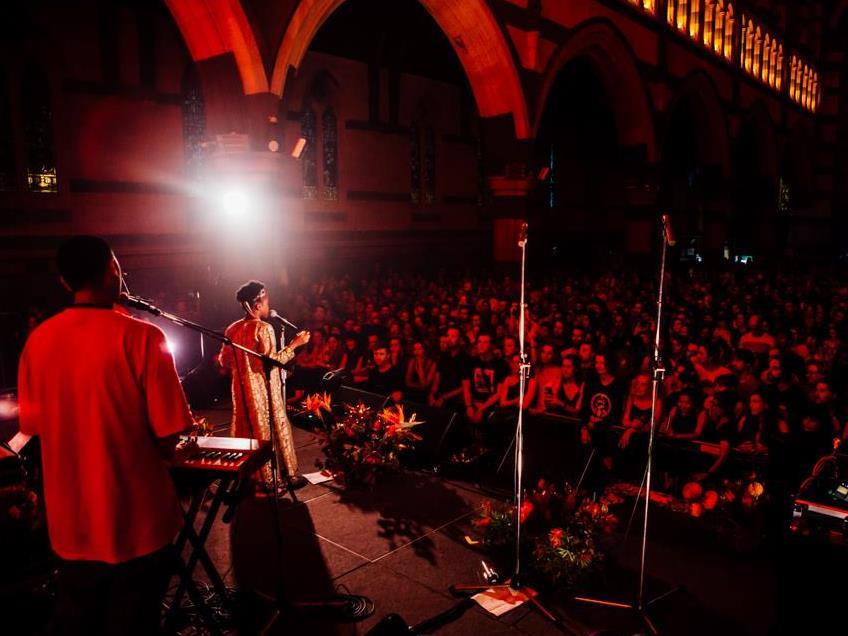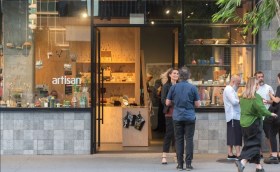Creative Victoria’s Audience Research Toolkit can help you learn more about your audience. Melbourne Music Week 2017 photograph by Jess Middleton.
From short surveys to in-depth focus groups, the data obtained through market research is an increasingly valuable weapon in the arsenal of arts organisations. But not all arts organisations have the time and resources to conduct appropriate market research, let alone analyse the data such research can produce.
Recognising this, Creative Victoria has created a new online tool that’s designed to help artists and arts organisations quickly and easily master the fundamentals of market research.
‘If you’re an independent artist, a small organisation or a business, it is unlikely that you are going to have a market research expert on staff – and yet the need for this data and insights has never been greater,’ said Linda Fleet, Director, Strategic Marketing & Communications at Creative Victoria.
‘Arts organisations need to understand their markets and audiences in order to grow their attendance numbers, better engage their local community, and improve business outcomes and sustainability. The Audience Research Toolkit is a do-it-yourself research guide that will help organisations through that process.’
Developed with expert advice from market research agency Patternmakers and digital agency Thirst, together with considerable input from several small arts organisations who were involved throughout the design process, the Audience Research Toolkit is a free online resource for anyone who’s new to the world of research as well as for experienced marketers and researchers.
More than 200 art workers from Victoria’s small to medium sector contributed to the development of the Toolkit, according to Patternmakers’ Managing Director, Tandi Palmer Williams, and their needs and issues directly shaped its content.
‘We found that there is a lot of interest in conducting research; everyone knows that they should be doing it and it’s often on the to-do list but people really lack the time and the money to do it properly,’ she said.
Many in the sector also lack the specialist skills required to conduct market research successfully, Palmer Williams added.
Consequently, the Audience Research Toolkit has been developed to be easily navigable, with information presented simply and concisely.
Fleet explained: ‘It’s got guides and templates and a range of how-to’s that will take you right through the process. If you are an experienced researcher there are guides, tools and templates that will provide shortcuts and time-saving exercises.’
Palmer Williams recommended the Toolkit to all in the sector. ‘The Toolkit breaks audience research down into manageable, bite-sized processes to help make it part of your core business and really lays out the tools, tips and guidance to do that research well. It’s for any organisation that wants to reach new people, develop audiences and deepen audience engagements,’ she said.
WHAT’S IN THE TOOLKIT?
Areas covered by the Toolkit include learning to understand your audience (including developing a consistent guide to measuring audiences, learning how to have useful conversations with attendees, and the best way to construct and distribute surveys), building new audiences and analysing the results of the information you’ve gathered.
Fleet said the site presents a number of different methodologies to assist artists and arts organisations gather and analyse data.
‘The Toolkit will take you through how to run a focus group really well; how to send out a survey to a group of people; how to do things like observational research, or even if you simply wanted to analyse your local market – understand the community that your organisation works within. It will step you through how to do that using ABS figures, local Council data and other kinds of information that you can get externally,’ she explained.
‘An evidence-based approach gives small and independent organisations an opportunity to go beyond the intuitive gut feel. If they want to strategise for their own organisation – so for their own internal use, to know what’s valued by an audience, why they’re coming, why they’re not coming – it will help them get a handle on that.’
Learn more about the Audience Research Toolkit
Palmer Williams noted that while many organisations are already surveying their audiences, they are not necessarily doing the job well.
‘Very few people are actually getting meaningful results from surveys. Little things like carefully designing an incentive to get reliable responses and build up the response rate is something so simple that you can do and which really lifts the quality of what you’re doing and gives you reliable data,’ she told ArtsHub.
‘Surveys aren’t just about gathering data – it’s about analysis, interpretation of the findings and then implementing those results. So we’ve tried to break down the research process – yes there’s tools to help with data collection, but also tools for analysis, reporting and even an action planning template to help you find actionable insights from the research and implement them.’
KNOW YOUR AUDIENCE
Having an accurate and up-to-date picture of your audience – relying on evidence rather than assumptions – is useful when it comes to reporting to funding bodies and sponsors, as well as for organisations that are developing ambitious new five or 10-year plans.
‘Increasingly, funders also want more information about the value and the impact that organisations are having in local communities,’ said Fleet. ‘The Toolkit can assist with this, providing an organisation with robust information to take to a potential sponsor – tangibly demonstrating their reach and the kind of people they connect with.’
Complementing Creative Victoria’s support of the sector via its range of grants programs, the development of the Toolkit is designed to strengthen marketing capacity across the state.
’This is a way that we can support artists and arts organisations of any size to be more successful, more sustainable, increase their market size and increase their audiences based on their own aspirations,’ Fleet explained.
ACCESSIBLE TO ALL – EVEN THE TIME POOR
Importantly, the Audience Research Toolkit avoids marketing jargon and has been designed to be easy to use, no matter your skill set or experience. While it’s been developed with and for the arts sector, Fleet believes it could be used by businesses in other sectors as well.
‘If you spend half an hour on it you’ll become very familiar with the content and be able to put it to practical use,’ Fleet said.
‘When we were doing the early consultations, more than half of people said they had around five hours a month to gather this kind of information. One of the features of the Toolkit is that it gives you an estimate of how long it will take to do a particular activity or task and the resources and equipment you will need. For example, if you’re doing observational research, or intercept interviews, it’s really useful to have an iPad – and if you can’t have an iPad, it will tell you what other tools you might need to do that particular task.’
A surprising amount of market research can be done in those five hours a month, Palmer Williams noted.
‘Just having candid conversations with your visitors in your venue can be done in hour a month, or observing people in a cultural space is something that can also be done in very little time, or by volunteers,’ she said.
‘And we’ve got some tools and templates for things like briefing volunteers about doing fieldwork – so we’ve really thought about the practicalities of what arts professionals need to actually implement the Toolkit.’
Fleet is keen for the sector to embrace the Audience Research Toolkit, and also to hear back from people about their experiences of using it.
‘We’ll be developing case studies and offering training sessions throughout the year. We’ll also be taking a sounding from the sector on its value and how it is best used. We’ve had great feedback from some early users, and we hope plenty of other organisations embrace it too,’ she concluded.
Visit creative.vic.gov.au/funding-and-support/resources/toolkit to learn more about Creative Victoria’s Audience Research Toolkit.






